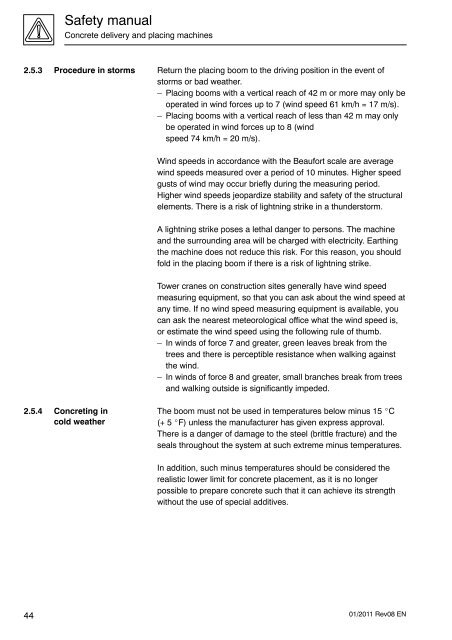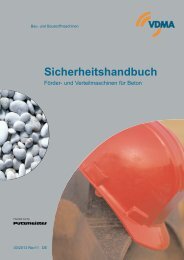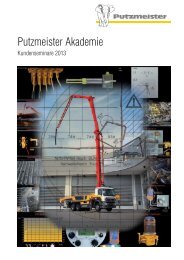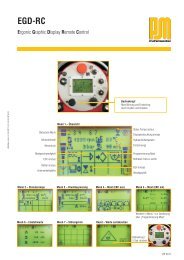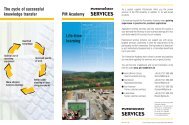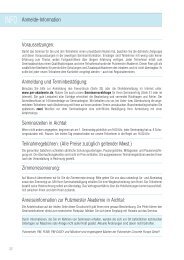English - Version - Putzmeister Akademie
English - Version - Putzmeister Akademie
English - Version - Putzmeister Akademie
Create successful ePaper yourself
Turn your PDF publications into a flip-book with our unique Google optimized e-Paper software.
Safety manual<br />
Concrete delivery and placing machines<br />
2.5.3 Procedure in storms<br />
Return the placing boom to the driving position in the event of<br />
storms or bad weather.<br />
– Placing booms with a vertical reach of 42 m or more may only be<br />
operated in wind forces up to 7 (wind speed 61 km/h = 17 m/s).<br />
– Placing booms with a vertical reach of less than 42 m may only<br />
be operated in wind forces up to 8 (wind<br />
speed 74 km/h = 20 m/s).<br />
Wind speeds in accordance with the Beaufort scale are average<br />
wind speeds measured over a period of 10 minutes. Higher speed<br />
gusts of wind may occur briefly during the measuring period.<br />
Higher wind speeds jeopardize stability and safety of the structural<br />
elements. There is a risk of lightning strike in a thunderstorm.<br />
A lightning strike poses a lethal danger to persons. The machine<br />
and the surrounding area will be charged with electricity. Earthing<br />
the machine does not reduce this risk. For this reason, you should<br />
fold in the placing boom if there is a risk of lightning strike.<br />
Tower cranes on construction sites generally have wind speed<br />
measuring equipment, so that you can ask about the wind speed at<br />
any time. If no wind speed measuring equipment is available, you<br />
can ask the nearest meteorological office what the wind speed is,<br />
or estimate the wind speed using the following rule of thumb.<br />
– In winds of force 7 and greater, green leaves break from the<br />
trees and there is perceptible resistance when walking against<br />
the wind.<br />
– In winds of force 8 and greater, small branches break from trees<br />
and walking outside is significantly impeded.<br />
2.5.4 Concreting in<br />
cold weather<br />
The boom must not be used in temperatures below minus 15 _C<br />
(+ 5 _F) unless the manufacturer has given express approval.<br />
There is a danger of damage to the steel (brittle fracture) and the<br />
seals throughout the system at such extreme minus temperatures.<br />
In addition, such minus temperatures should be considered the<br />
realistic lower limit for concrete placement, as it is no longer<br />
possible to prepare concrete such that it can achieve its strength<br />
without the use of special additives.<br />
44 01/2011 Rev08 EN


